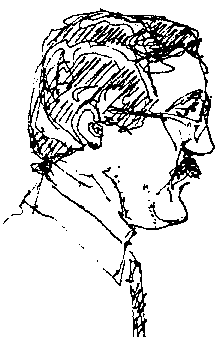
The Deans Page
Ron Wardell, Acting Dean

Like society in general, Environmental Design presently faces several tensions. Although these tensions are not comfortable, they are unavoidable and must be viewed constructively.
We stand in tension between interdisciplinarity and the demands of our disciplines. Some of our Programmes have requirements for accreditation or similar professional expectations. In other cases, there are expectations for areas and levels of competence for practice in the career of choice. At the same time, there is interdisciplinarity inherent in our professions—environmental intervention requires a range of considerations, of areas of knowledge, and of ways of thinking and working. And there is interdisciplinarity that bridges among our four Programmes and across the campus. At the same time as the interdisciplinarity of our core courses have been discussed, other interdisciplinary initiatives have emerged, including co-teaching arrangements (e.g. the course in Health in the Built Environment, the interdisciplinary seminars), and joint initiatives with other Faculties (e.g. Engineering for the Environment, the joint MBA/MEDes). Interdisciplinarity remains a fundamental tenet of EVDS but what it means will continue to be hotly debated.
We stand in tension between flexible, individually tailored learning and academically sound expectations. Two focuses of this tension are the Programme of Study and the Master's Degree Project. The individual student's programme of study (POS), which details how competence is obtained and demonstrated towards career and educational objectives, is more constrained by disciplinary requirements (e.g. for accreditation) than originally conceived but must still provide flexibility. Given the evolution of POS requirements and the workload concerns of students and faculty, the expectations for MDPs are similarly in question. Unlike in many graduate programmes where students follow the professor's research agenda, most EVDS students still initiate and develop their own Master's Degree Project topics. For some, the MDP is an opportunity for graduate level synthesis and specialization, and an entrance into future employment. For others, the MDP is a debatable overload on top of more courses than would be expected in a course-based master's degree.
We stand in tension between what we would like to do and the efficiencies necessary in times of decreasing resources. The facilities of the Centre for Livable Communities, Computer Applications Lab, Resource Centre, and Workshop are all under pressure. At the same time as some of our disciplines undergo rapid change, we face restricted room to manoeuvre to meet these challenges. Our students have to balance the demands of their programme of studies, finances, and their personal lives at a time when career competition may be fierce, and jobs and funding are limited. Our faculty have to balance teaching, research, service, and their personal lives at a time when workloads are increasing and research funding is decreasing. This tension demands that we find creative ways to do more with less.
In the midst of these tensions, it is sometimes easy to lose spirit. At such times we need to remember our strengths and accomplishments. As evidence of our strength, the architecture accreditation board review recently rated us as being in the top 10% of architecture schools in North America. We have an exceptionally gifted student body. We have faculty who are on the leading edge of their disciplines, both in traditional terms of academic publications and in reputations as leaders in the professions. Our support staff are committed and hard-working. Our graduates are very successful and have gone on to an amazing range of careers. And, in the final analysis, there is simply a great deal of very good work done by students and faculty in Environmental Design.
[ Top of Page | Table of Contents | Intervention | Next Article ]